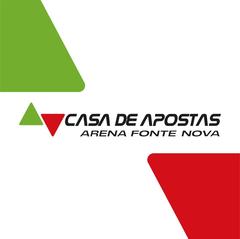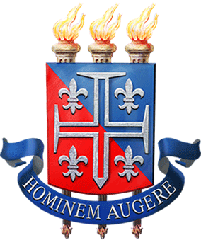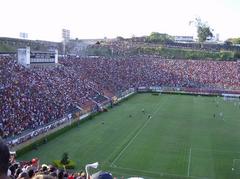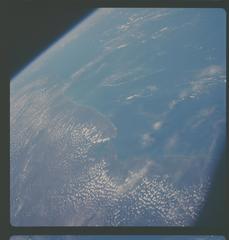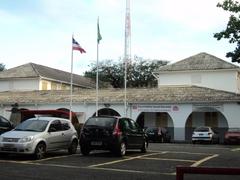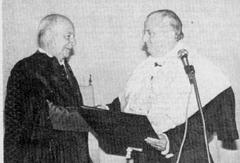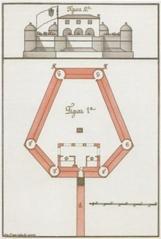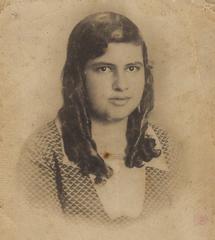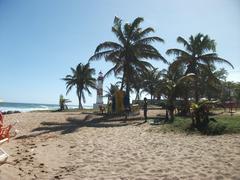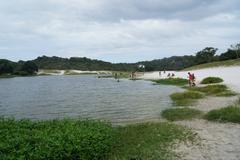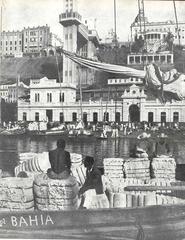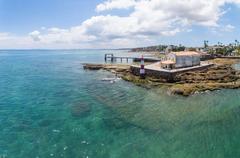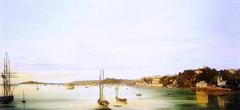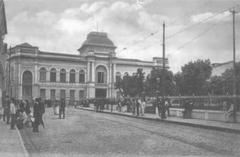
Bahia Museum of Art: Visiting Hours, Tickets, and Salvador Historical Sites Guide
Date: 04/07/2025
Introduction
Nestled on the picturesque shores of the Bay of All Saints in Salvador, Brazil, the Bahia Museum of Art (Museu de Arte da Bahia, MAB) stands as a testament to the city’s rich artistic and cultural legacy. Established in 1918, MAB is one of Brazil’s oldest art museums, born from early 20th-century efforts to safeguard Bahia’s unique blend of Portuguese colonial heritage and Afro-Brazilian traditions (Museu de Arte da Bahia - Governo da Bahia). Housed in the historic Solar do Unhão—a 17th-century colonial mansion and architectural landmark—the museum offers more than 5,000 works spanning painting, sculpture, religious artifacts, decorative arts, and textiles.
As a dynamic cultural hub, MAB not only preserves Bahian heritage but also fosters community engagement through exhibitions, educational initiatives, and digital outreach. This comprehensive guide provides all you need to know about Bahia Museum of Art visiting hours, ticketing, historical context, must-see exhibits, accessibility, and travel tips for exploring Salvador’s historical sites.
Table of Contents
- Founding and Early Years (1918–1940s)
- Relocation and Expansion (1940s–1970s)
- Collection Development and Notable Acquisitions
- Role in Preserving Bahian and Brazilian Heritage
- Modernization and Community Engagement (1980s–Present)
- Architectural Significance of the Solar do Unhão
- Visiting the Bahia Museum of Art: Essential Information
- Visuals and Interactive Elements
- Frequently Asked Questions (FAQ)
- Cultural Significance and Community Engagement
- Overview of the Collection and Must-See Exhibits
- Virtual Access and Digital Initiatives
- Practical Tips for Visitors
- References
Founding and Early Years (1918–1940s)
The Bahia Museum of Art was founded in 1918, initially occupying the Public Archive of Bahia. Its early collection focused on religious art and colonial artifacts, reflecting Bahia’s deep Portuguese and Afro-Brazilian roots. Growth in these decades relied largely on donations from private collectors, laying the foundation for its current diverse holdings (Museu de Arte da Bahia - Governo da Bahia).
Relocation and Expansion (1940s–1970s)
In 1943, the museum moved to the Solar do Unhão—a 17th-century colonial mansion on the Bay of All Saints (Solar do Unhão - Salvador). This relocation marked a transformative chapter, enabling the museum to expand its collection and exhibitions. The historic setting, with its colonial architecture and panoramic bay views, became integral to the museum’s identity. Increased governmental support in the 1960s and 1970s helped professionalize operations and enrich programming.
Collection Development and Notable Acquisitions
Today, the museum boasts over 5,000 pieces from the 17th to 20th centuries (Museu de Arte da Bahia - Acervo), including:
- Religious Artifacts: Baroque sculptures, altarpieces, and liturgical objects from historic Bahian churches.
- Furniture and Decorative Arts: Colonial-era furniture, porcelain, and silverware.
- Paintings: Works by José Teófilo de Jesus, Prisciliano Silva, and Presciliano Silva, as well as European masters.
- Textiles and Ceramics: 18th- and 19th-century pieces unique to the region.
Ongoing acquisitions emphasize the diverse cultural influences shaping Bahia.
Role in Preserving Bahian and Brazilian Heritage
MAB plays a crucial role in interpreting Bahia’s artistic and cultural legacy (Instituto do Patrimônio Histórico e Artístico Nacional). Its exhibitions highlight the region’s synthesis of European and Afro-Brazilian traditions, fostering public appreciation and dialogue on identity and memory.
Modernization and Community Engagement (1980s–Present)
Recent decades have seen MAB modernize with interactive exhibits, digital catalogues, and multilingual signage (Museu de Arte da Bahia - Visitação). The museum hosts conferences, workshops, and artist residencies, and partners with universities and NGOs. Free admission days, educational programs for schools, and exhibitions of contemporary Bahian artists foster local pride and broader access.
Architectural Significance of the Solar do Unhão
Solar do Unhão is a masterpiece of colonial architecture, harmonizing Portuguese and Brazilian elements—stonework, wooden beams, and tilework (Solar do Unhão - Salvador). Its preservation ensures an authentic historical ambiance, and its bayfront location offers sweeping views, making the museum a destination for both art and history lovers.
Visiting the Bahia Museum of Art: Essential Information
Visiting Hours and Days Open
- Tuesday to Sunday: 10:00 AM to 5:00 PM (some sources list closing at 6:00 PM; check official site for updates)
- Closed: Mondays and some public holidays
- Check for changes: Museu de Arte da Bahia - Visitação
Ticket Prices and Free Admission
- Modest general admission.
- Discounts for students, seniors, and children.
- Free admission on select days each month.
- Tickets available at the entrance; advanced booking recommended during peak times.
Accessibility
- Wheelchair-accessible with ramps and elevators.
- Staff assistance available for visitors with special needs.
- Accessible restrooms.
Guided Tours
- Regular tours in Portuguese.
- English and Spanish tours by arrangement.
- Advance booking recommended for groups.
Travel Tips
- Visit mornings on weekdays to avoid crowds.
- Reachable by taxi, public transit, or on foot from city center.
- Limited parking; public or ride-sharing transport advised.
Nearby Attractions in Salvador
- Pelourinho historic district
- São Francisco Church and Convent
- Mercado Modelo
- Carlos Costa Pinto Museum
- Palacete das Artes
Visuals and Interactive Elements
Explore virtual tours and high-quality images on the museum’s official site or Google Arts & Culture. Use maps and interactive guides for a richer visit experience.
Frequently Asked Questions (FAQ)
Q: What are the Bahia Museum of Art visiting hours?
A: Open Tuesday–Sunday, 10:00 AM–5:00 or 6:00 PM (check official site).
Q: What is the ticket price?
A: Modest admission; discounts for students, seniors, children; free days monthly.
Q: Are guided tours available?
A: Yes, in Portuguese and by request in English/Spanish.
Q: Is the museum wheelchair accessible?
A: Yes, with ramps, elevators, and accessible restrooms.
Q: Can I take photos inside?
A: Yes, but flash and tripods may be restricted.
Cultural Significance and Community Engagement
Historical and Cultural Context
The museum, in Salvador’s Vitória district, is housed in a neoclassical mansion that reflects the city’s colonial and post-colonial past. Its 5,000+ works span paintings, sculptures, furniture, and sacred art, highlighting Bahia’s indigenous, African, and European influences (Visit Salvador da Bahia).
Community Engagement Initiatives
- Educational Programs: Guided tours, workshops, and lectures for all ages; virtual content since the COVID-19 pandemic (Museu de Arte da Bahia).
- Collaborative Exhibitions: Partnerships with local artists and NGOs, such as the Arte Eletrônica Indígena project (STARTS Prize: Arte Eletrônica Indígena).
- Social Inclusion: Free/reduced admission; accessibility resources; inclusive exhibitions.
Cultural Events and Festivals
- Active during major Salvador festivals (Carnival, Yemanjá Festival).
- Special exhibitions and workshops on local traditions.
Impact on Local Identity and Tourism
- Fosters Bahian pride and responsible tourism.
- Multilingual tours, interactive exhibits, and proximity to other cultural sites encourage exploration.
Overview of the Collection and Must-See Exhibits
- Paintings by José Teófilo de Jesus, José Joaquim da Rocha, Presciliano Silva.
- Baroque religious sculptures and altarpieces.
- 19th-century tiles, colonial furniture, ceramics, glassware.
- Special collections like the Góis Calmon Collection and contemporary exhibitions (Bahia.ws).
Virtual Access and Digital Initiatives
- Google Arts & Culture: Virtual tours and high-resolution images (Google Arts & Culture).
- Online Resources: Multimedia exhibitions, educational materials, and research support.
Practical Tips for Visitors
- Double-check opening hours and ticketing before visiting.
- Book guided tours in advance, especially for groups.
- Allow time to visit nearby historical sites and enjoy panoramic views from the museum grounds.
Summary
The Bahia Museum of Art is a vibrant cultural institution that preserves and celebrates Salvador and Bahia’s artistic heritage. Its extensive collections, landmark architecture, engaging community programs, and modern digital initiatives offer visitors a comprehensive cultural experience. Plan your visit to immerse yourself in Bahia’s history, art, and dynamic community life. For updated hours, tickets, and special events, consult the official museum website, and enhance your journey by exploring nearby attractions and the Audiala app for curated cultural experiences and guided tours.








